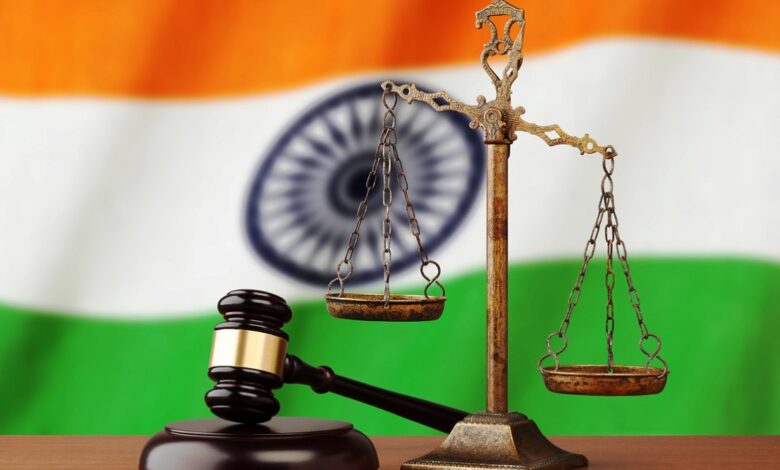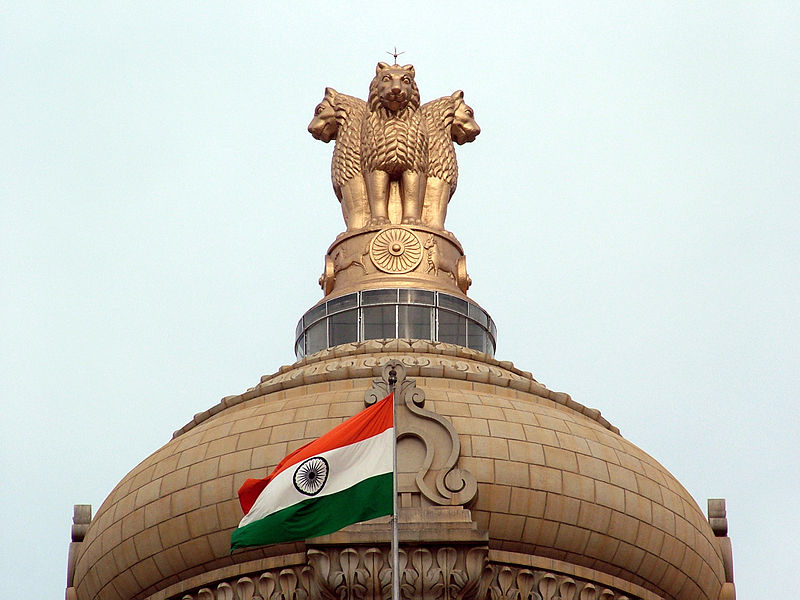Should judges get promotions and incentives and perks only based on the number of cases they give judgment within a time frame?

Should judges get promotions, incentives, and perks based only on the number of cases they give judgment on within a time frame? The issue of justice court proceedings is now well-known and urgent to both the legal community and the general public. It is common knowledge that India’s development and well-being are being hampered, at least in part, by a sclerotic legal system, but it merits reiterating for just this reason.
Courts in India lack the capacity and motivation to exert more control over the speed of litigation due to several institutional limitations and an imbalance of power between judges and attorneys in the country. The current structure of India’s judicial assignments, transfers, and promotions provides judges with very little motivation to participate in the laborious reform process.

A judge’s career is not advanced by attempts to modify the system, and such actions may result in a conflict with lawyers in whom the judge sees little chance of victory or support. Even when there are sufficient incentives, it is still seriously debatable whether control of the process can be properly implemented.
The judiciary is failing to uphold its promise of a swift trial, but how did this happen? Experts attribute this to an overworked justice system. As early as 1987, the Law Commission recognized the judicial crisis and recommended quick appointments to replace vacancies, as well as a threefold increase in the judge-to-population ratio from the then-current levels to 50 per 100,000 residents.
In the 2014 Delhi Judicial Services test, for example, just 115 out of 1,000 applicants qualified for the 85 available positions. What was surprising was that 68 of the 885 who failed were judges from different states. Even the 115 original qualifiers were found to be tied to previously selected judges in some way.
A lower court judge’s prospects of getting elevated to the high court or Supreme Court are likewise slim. When compared to promotions from the lower judiciary, the high courts have a disproportionately high number of judges appointed directly from the bar.
Much has been written about how the Constitution promised justice, but the institutions it established have failed to uphold that promise during recent speeches. The argument that plaintiffs and attorneys (at least on one side of a civil case) have no motivation to complete a case as quickly as possible was recently stated in a column in a big newspaper.
The article then questioned if the judiciary had the motivation to make decisions as soon as possible. Few litigants and lawyers are motivated to resolve conflicts quickly. Extremely drawn-out legal processes, numerous hearings, and a never-ending stream of injunctions and appeals serve two (unjust) purposes: first, they make sure that justice is not quickly served and one party to the litigation benefits from the status quo; and second, they raise the possibility that the other party will give up completely. There are examples when litigation has lasted in India’s courts for more than 50 years, and the case may still be pending.
In addition to being a problem for the administration of justice, the backlog of cases and the slow pace of Indian courts serve as a haven for corruption. Given the outrageous delays, plaintiffs who have the financial means to do so are strongly encouraged to bribe officials or use their connections to get a quicker decision. (Most bribes are not given to judges directly; instead, they are given to court employees or middlemen, such as attorneys.)

It’s, therefore, not surprising that overburdened, underpaid judges with overwhelming caseloads might be enticed to take these illegal payments without condoning those judges who break their oaths of office. Therefore, the tremendous case backlog in the lower courts has essentially established a two-track system, one for those who can afford to do so.
The more intriguing issue is whether or not the judiciary is motivated to arbitrate cases quickly. The judiciary does have the resources to counteract the perverse incentives that usually attach themselves to “at least one side of a civil lawsuit,” according to our argument in this article. This is the exact opposite of a throwaway question.
Just as in all other civilized legal systems, ours has enough provisions to guarantee that the amount of frivolous litigation is kept to a minimum. What is a frivolous lawsuit, one might wonder? It is not only a legitimate question but one on which the Indian legal system has spent a good bit of time and effort. The current definition of frivolous litigation in our legal system is “has no merit whatsoever and is meant to bother the defendant or is an abuse of the judicial process.”
This issue is only likely to become worse as the backlog of unresolved cases grows. Although it may be ethically and legally acceptable to punish judges (and their employees) who are discovered to be accepting or asking for bribes, as well as litigants and facilitators who do so, punishing these individuals is insufficient to solve the systemic causes of India’s judicial corruption issue.
In the Civil Procedure Code of 1908, we not only describe it but also have explicit prohibitions against frivolous lawsuits. Pleadings that are “unnecessary, scandalous, frivolous, or vexatious,” among other things, maybe struck out under Order 6 Rule 16. Similar to Order 7 Rule 1, where the plant fails to state a claim, the case must end at the threshold. In connection with false or vexatious claims or defences, Section 35-A expressly allows for compensation fees.
Each of these clauses is there to reduce frivolous litigation or, if that is not possible, to appropriately punish it. In other words, there are particular, counterproductive incentives in place to discourage pointless legal action that serves only to delay the swift administration of justice.
Of course, India is not the only country with these advantages. Unfortunately, we are guilty of not making as much use of these incentives as we should. In the end, we have succeeded in both fostering and maintaining a culture in which frivolous lawsuits are the rule rather than the exception. And even more, regrettably, this has subsequently spread to several related concerns, including the abuse of special leave applications, public interest lawsuits, cases of personal liberty violations, and the deprioritization of crucial fundamental rights.

The Indian judicial system has problems.
The slow processing of cases is one of the biggest problems with the Indian court system. The rising number of new cases and the sluggish rate of case resolution are the main causes of pendency. As of May 2022, there was about 4.7 crore of active litigation in courts across the whole judicial system. Over 1,82,000 cases, with 87.4% of them in the lower courts and 12.4% in the high courts, have been unresolved for more than 30 years. Courts reported a 27% rise in pending cases between December 2019 and April 2022, according to statistics from the Department of Justice’s National Judicial Data Grid database. There aren’t enough judges available right now to settle conflicts.
Data from the National Judicial Data Grid database of the Department of Justice shows that between December 2019 and April 2022, the number of pending court cases increased by 27%. There are currently not enough judges available to settle disputes. According to Department of Justice statistics, there were 400 open positions for judges in the Supreme Court of India and the High Courts as of June 2022, which is insufficient to reduce the backlog of unresolved cases in India.
Reduction of Pendency via Arrears Committees and its follow-up:
Arrears Committees have been established in the High Courts to resolve matters that have been lingering for more than five years, in accordance with a resolution adopted at the Chief Justices’ Conference held in April 2015. District Judges have also established arrears committees.
The Supreme Court has established the Arrears Committee to develop strategies for reducing the backlog of cases in the High Courts and District Courts. In the past, the Minister of Law and Justice has brought up the issue with Chief Ministers and Chief Justices of High Courts, calling their attention to cases that have been outstanding for more than five years and urging them to launch a campaign to reduce pending cases. The Department has created an online reporting tool for High Courts to report on how well the Malimath Committee Report’s directions for the Arrears Eradication Scheme are being followed.
Since the Centrally Sponsored Scheme (CSS) for Development of Infrastructure Facilities for the Judiciary was established in 1993–1994, Rs. 9013.21 crores have been given. In accordance with this plan, the number of court halls has expanded from 15,818 as of June 30, 2014, to 20,993 as of June 30, 2022, and the number of judicial apartments has increased from 10,211 as of June 30, 2014, to 18,502 as of June 30, 2022. Additionally, development is ongoing on 1,659 residential units and 2,677 courthouses (as per Nyaya Vikas Portal).
A total of Rs. 9,000 crores, of which Rs. 5,307 crores would come from the central share, will be spent on the Centrally Sponsored Scheme for the Development of Infrastructure Facilities for the Judiciary through 2025–2026. Construction of lawyers’ halls, restroom complexes, and computer rooms would also be included in this project, in addition to court halls and residential units.
Positions in the Supreme Court, High Courts, District Courts, and Subordinate Courts that are vacant must be filled:
The Minister continued: “Between 1 May 2014 and 15 July 2022, 46 judges were appointed to the Supreme Court.” In the High Courts, 619 more judges received permanent status, in addition to 769 new judges being selected. There are currently 1,108 sanctioned judges serving in the High Courts, up from 906 in May 2014. The number of judicial employees sanctioned and working for the District and Subordinate Courts would rise from 19,518 and 15,115 to 24,613 and 19,288, correspondingly between December 2013 and July 29, 2022.
The Indian judicial system needs reform.
The judicial system needs urgent revision in light of the nation’s rapid development. According to a legal axiom, justice denied is justice delayed. The injured party expects a swift and effective resolution of the conflict, which is the foundation for the right to a speedy trial and equal treatment meant to strengthen the judicial system.
The complexity of the cases, the complexity of the current system, and the weight of numerous cases all contribute to the sluggish resolution of legal challenges. Reforms should make a strong effort to enhance the judiciary’s administrative capabilities. The Centre suggested actions including lengthening court hours, creating fast-track courts, and creating Indian Courts and Tribunal Services in order to boost judicial output (ICTs).
The development of the judicial system must be ensured by a well-coordinated and integrated auxiliary reform plan that takes into account the executive branch, local government, different economic improvements, and administrative reforms. Most importantly, without institutional harmony, balance, and the state’s capacity to carry out regulatory, oversight, economic, civil society, and public democratic control functions, judicial changes in the nation will not be able to implement them.

Conclusion
India’s legal system has seen several modifications over the years. The Indian Constitution, which has created the functioning of the whole judicial system in India, is the utmost pillar and foundation. The country’s quick development necessitates substantial judicial reforms as well. The Indian government is making an effort to clear the obstacles and backlog. However, additional development still has to be undertaken.
Edited by Prakriti Arora




